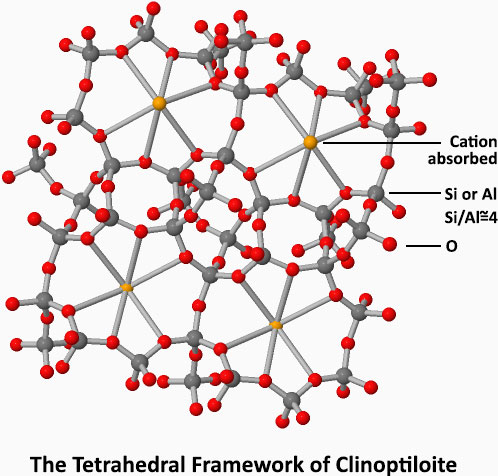Nearly 50 types of natural Zeolite can be found around the globe. Clinoptilolite (which belongs to the heulandite group) is the most common and most suitable natural Zeolite type for industrial, commercial and also private applications. It is a natural Zeolite comprising a microporous arrangement of silica and alumina tetrahedra. It has a very complex formula of: (Na,K,Ca)2-3Al3(Al,Si)2Si13O36·12H2O. More than 90% of the world’s Zeolite production specialises in the Clinoptilolite family. Apart from natural Zeolite, many synthetic Zeolite variations are being developed around the world for custom applications.

Clinoptilolite forms a series of three different species:
- Clinoptilolite-K – heulandite-K solid solution series,
- Clinoptilolite-Na – heulandite-Na solid solution series,
- Clinoptilolite-Ca – heulandite-Ca solid solution series,
These are named after their dominant elements. These elements are exchanged during the cation exchange in favor of heavy metals, toxins, ammonia (and many more) which have a higher attraction for the mineral.
The mineral forms as white to reddish tabular monoclinic tectosilicate crystals with a Mohs hardness of 2 to 5 and a specific gravity of 2 to 2.3 (depending on origin).
When Micronized our Clinoptilolite has a specific Surface Area of up to 1934m2/kg

